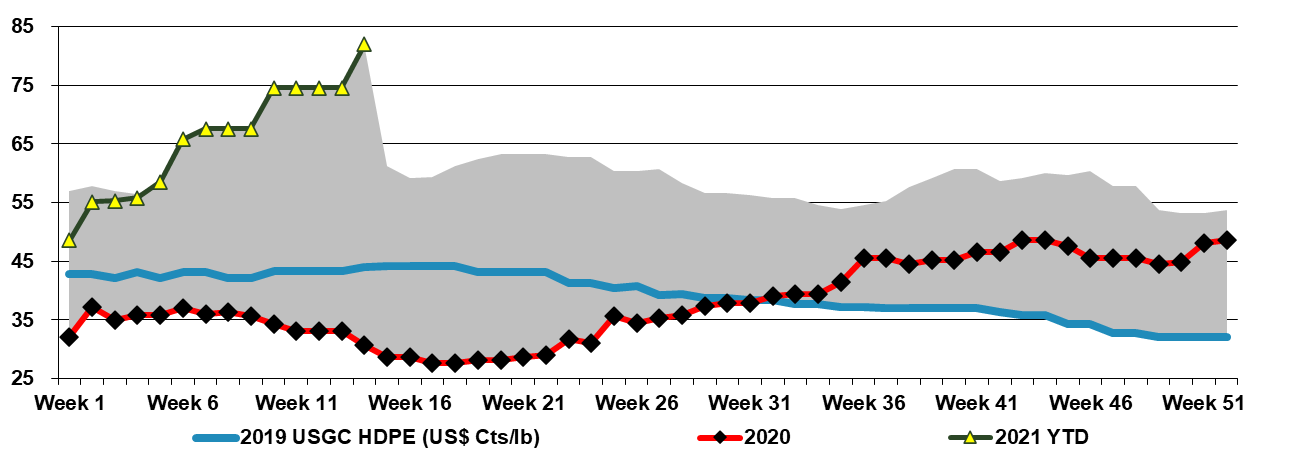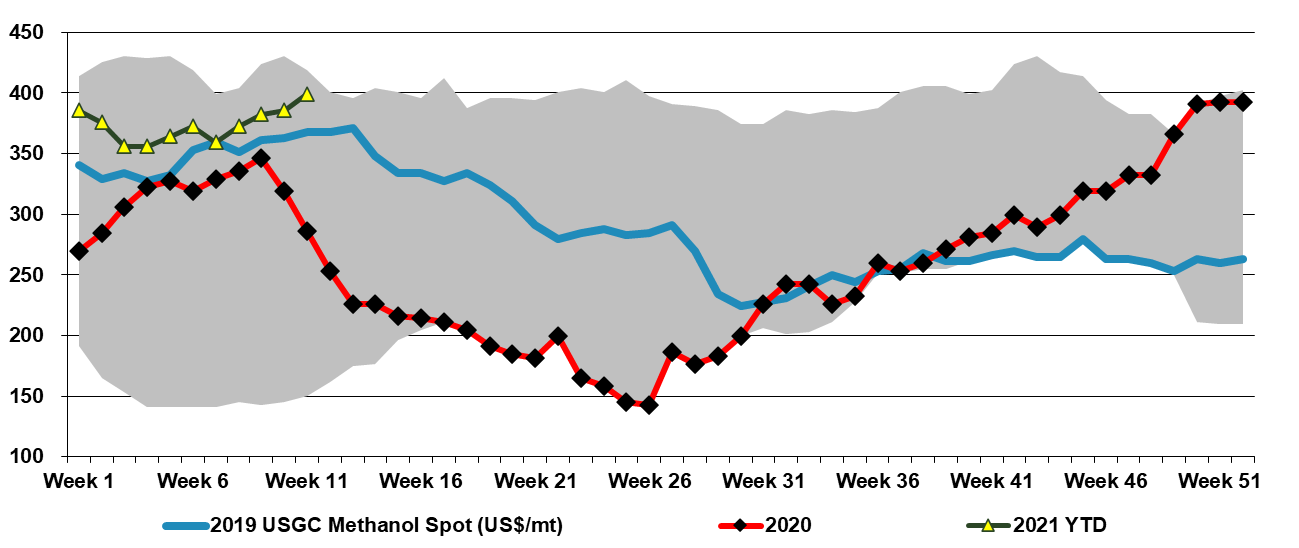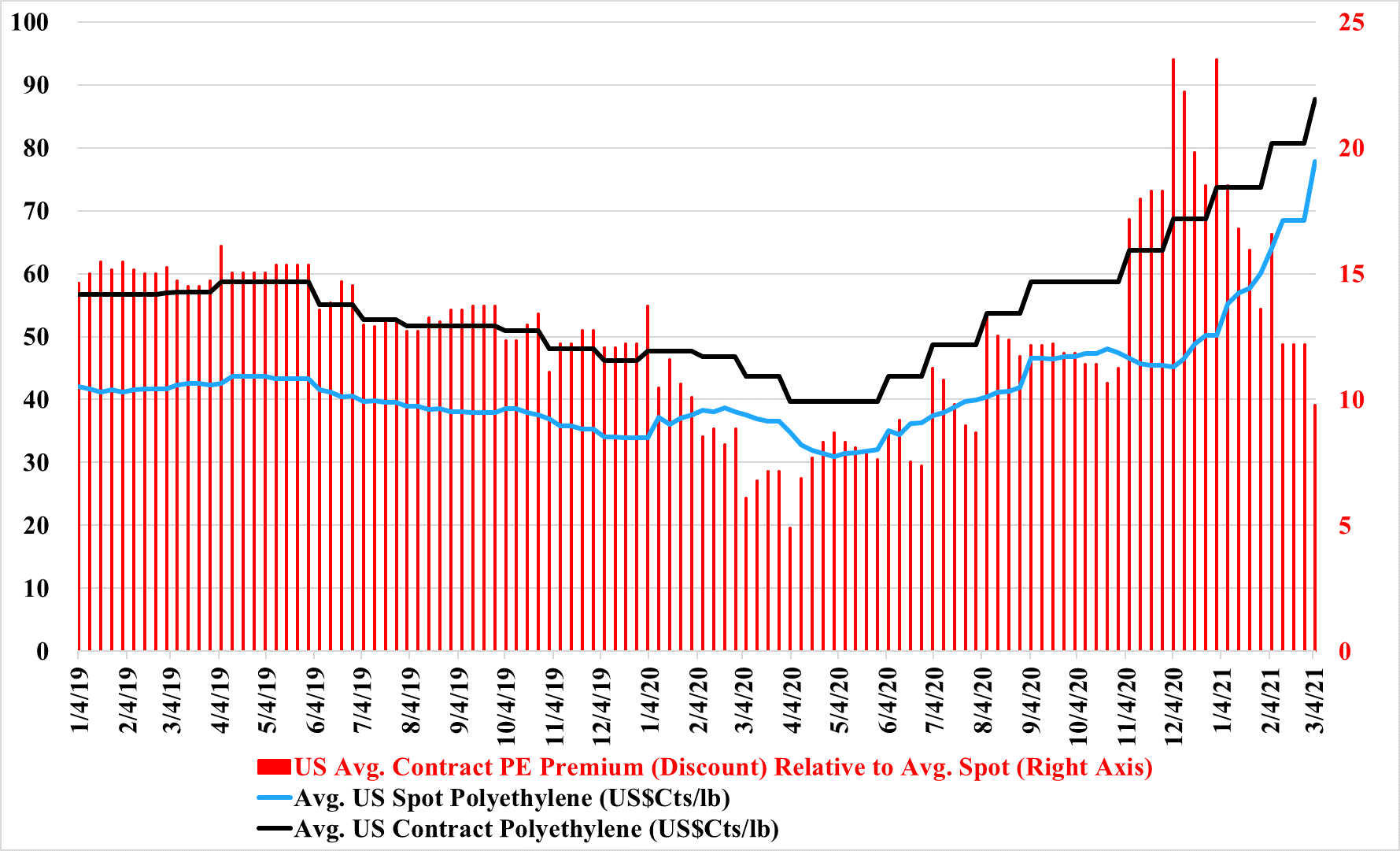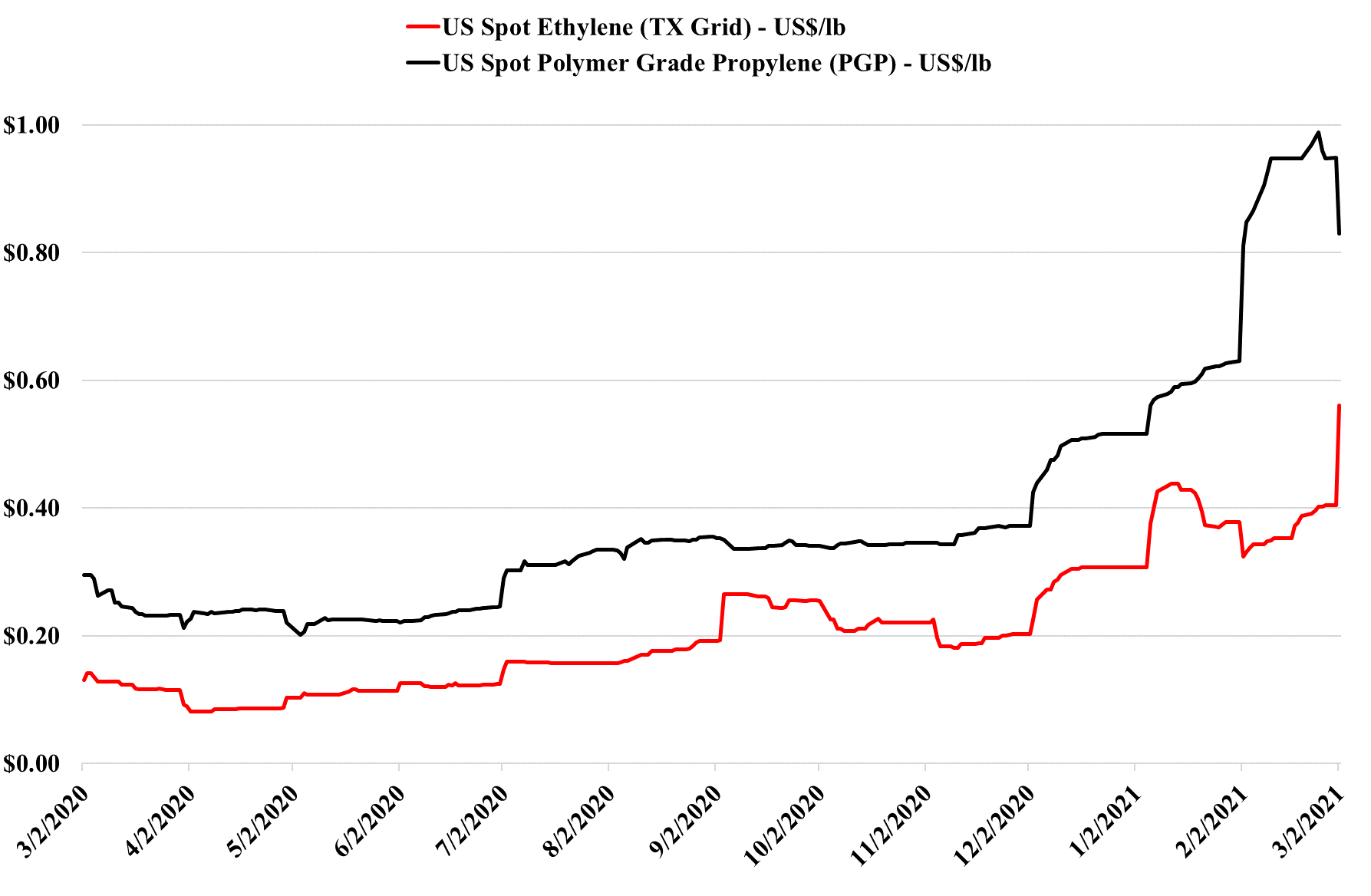The fall in Chinese imports is not a surprise given the significant capacity additions over the last 6 months. There is an additional wave of investments planned for the next 6 months and we could see imports fall further as the year progresses. Even with strong demand growth in Asia and other parts of the world, this could leave the major exporters – the Middle East and North America with surpluses, although that is not evident today. Prices continue to rise for polyethylene in the US (see chart below) and Europe, partly because of the lingering impacts of the freeze, but also because apparent demand is high. This is going to be a tough year to call as we expect to see the supply chains over-compensate for the problems that have existed since the last quarter of 2020 and chain inventories to build. This could add several hundred basis points of demand in 2021, masking the new capacity in China and the theoretical oversupply that would exist if all global facilities were operating. This could set up 2022 for disappointment, and impact the longer-term supply/demand balance negatively, as the high profits of 2H 2020 and 2021 could encourage more investment such as the ones highlighted by SABIC, and India.
Polymer Pricing Strength Despite Much Lower Chinese Import Demand
Apr 1, 2021 12:01:47 PM / by Cooley May posted in Chemicals, Polymers
High Polymer Prices Will Change User Behavior (In Some Cases Permanently)
Mar 18, 2021 1:59:13 PM / by Cooley May posted in Chemicals, Polymers
The exhibit below shows a “crazy” 5-year extreme price difference between polymer pricing in Asia and the US, and scanning our longer-term database we believe this is an all-time extreme not just for the last 5 years. This is very bad for US polymer sellers in the medium to long-term, despite some windfall profits that may extend through 1H 2021. The high prices are doing a couple of things, they are encouraging plastic consumers to experiment with alternative materials and they are encouraging them to experiment with other suppliers, including imports.
Confidence Rises with Prices - New Capacity Ahead?
Mar 16, 2021 1:21:43 PM / by Cooley May posted in Chemicals, Polymers, Methanol
In today's daily, we discuss methanol pricing and show that the arbitrage with Asia is now negative, based on the near-term increase in US spot pricing. As with polyethylene, the major exporters are more concerned about the export margin over their costs, versus the difference between spot prices in each region. Certainly, where they have flexibility some US producers will try to divert methanol to the domestic market, but likely not at the expense of important export relationships and contractual obligations.
The Swings and Roundabouts of Commodity Pricing
Mar 11, 2021 3:41:22 PM / by Cooley May posted in Chemicals, Polymers, Plastics
Today we had earnings reports from both Braskem and Lanxess. It is hard to fault either company for the tones and expectations lined out in today's report. This is an industry where forecasting is generally problematic as there are too many potential influences that are not only outside the control of the companies themselves, but also prone to surprise movements regularly. Who could have foretold COVID and the early impacts of COVID on all commodity and specialty markets. Equally, no-one forecast the rapid rise in durable demand in 2H 2020 the subsequent impact that it has had on global supply chains – and then there is the weather!
The Freeze Effects, Push Global Prices Higher
Mar 2, 2021 10:37:00 AM / by Cooley May posted in Chemicals, Polymers
The effects of the Texas outages are far from over, and given some of the very tight supply chains before the storm (see our Sunday recap – for comments on excessive optimism and US customer inventories), there is limited flexibility in the system anywhere and prices continue to rise globally. This is maintaining a trend in the US and reversing some of the trends in Europe year to date and many of the more negative trends in Asia that had resulted from significant capacity additions. The cut back in US polymer exports, especially polyethylene is creating anticipated shortages everywhere and prices reflect attempts by importers to secure alternate supply. However, the pricing rally extends well beyond polyethylene.






